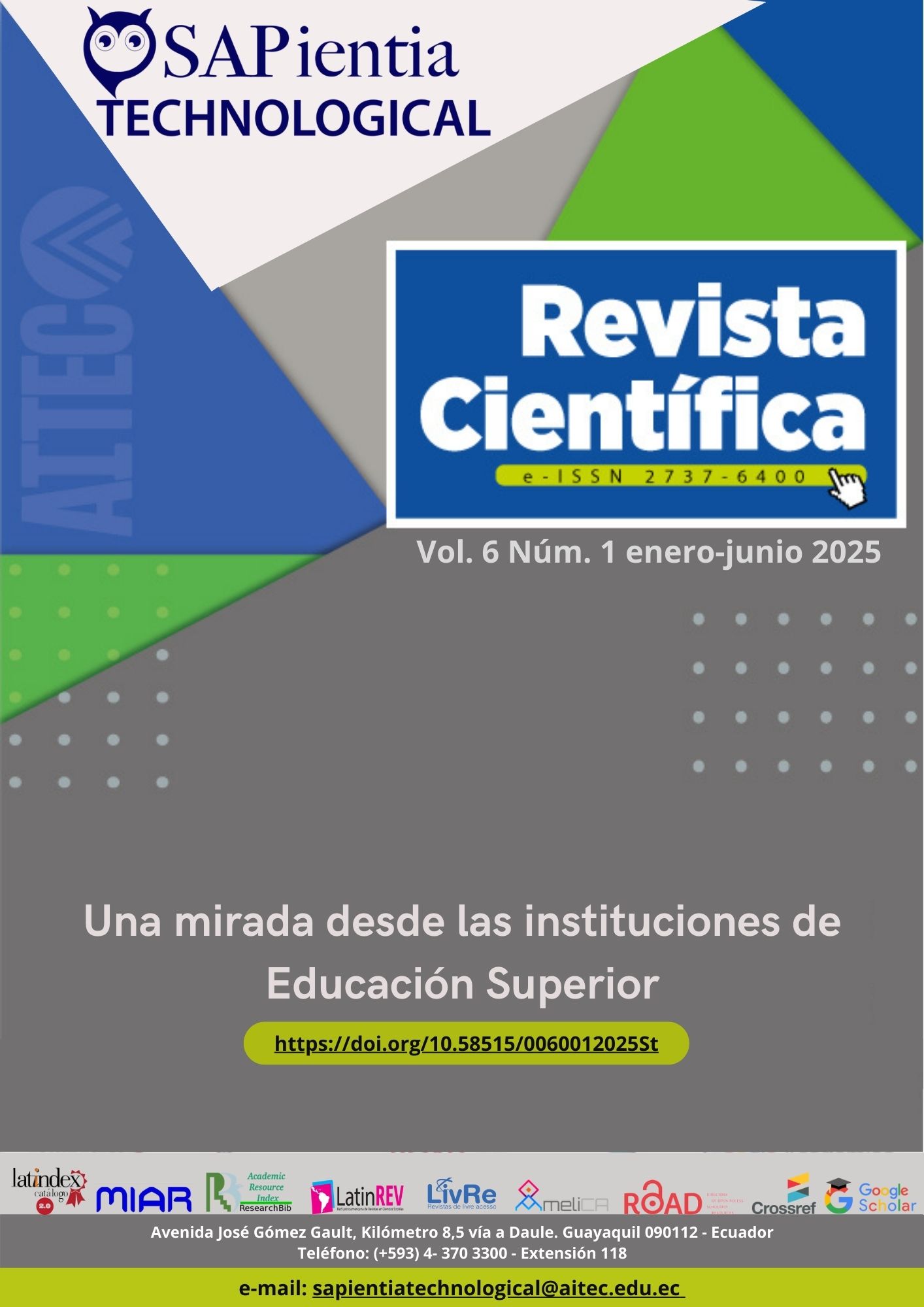Proposal of a methodological structure as a comprehensive and detailed guide for the design of tourist routes.
Main Article Content
Abstract
Abstract
The article entitled Methodological structure for the design of a tourist route proposed the development of a comprehensive guide for creating tourist routes, focusing on aspects such as cultural authenticity, sustainability and accessibility. The overall objective was to design a methodological structure to serve as a tool for tourism planners to develop attractive and functional routes in local destinations.The study was approached through a qualitative approach, with an exploratory scope and using grounded theory as a methodological framework, allowing the construction of emerging patterns based on semi-structured interviews with key actors in the design of tourist routes. In the analysis of the information, through open coding, categories related to essential stages and factors in the design of routes were identified. To ensure the validity of the results, data triangulation and theoretical saturation strategies were used. The research complied with ethical principles of confidentiality and informed consent of the participants. The results provided a methodological model that can be replicated and adapted to different tourism planning contexts, providing a concrete tool for the design of routes in local destinations and enriching the tourism experience through a structured approach.
Keywords: tourist routes, sustainable development, tourist management, tourist resources.
Article Details

This work is licensed under a Creative Commons Attribution-NonCommercial-ShareAlike 4.0 International License.
References
Calderón, D. M., Arcila, M. L., & López, J. A. (2018). Las Rutas e Itinerarios Turístico-Culturales en los Portales Oficiales de Turismo de las Comunidades Autónomas Españolas. Revista de Estudios Andaluces, 35, 123-145. https://doi.org/10.12795/rea.2018.i35.05
Charmaz, K. (2006). Constructing grounded theory: A practical guide through qualitative analysis. Sage Publications. http://www.sxf.uevora.pt/wp-content/uploads/2013/03/Charmaz_2006.pdf
Cooper, C., & Hall, C. M. (2008). Contemporary Tourism: An International Approach. Routledge. https://api.pageplace.de/preview/DT0400.9781136414466_A23845477/preview-9781136414466_A23845477.pdf
Creswell, J. W. (2014). Research design: Qualitative, quantitative, and mixed methods approaches (4th ed.). Sage Publications. https://books.google.com.co/books?id=4uB76IC_pOQC&printsec=frontcover&source=gbs_book_other_versions_r&cad=3#v=onepage&q&f=false
Servicio Nacional de Aprendizaje (s.f.) Diseño de Rutas Turísticas. https://www.academia.edu/32072888/Dise%C3%B1o_de_Rutas_tur%C3%ADsticas
Ejarque, J. (2005). Destinos turísticos de éxito. Diseño, creación, gestión y marketing. Madrid: Pirámide. https://dialnet.unirioja.es/servlet/libro?codigo=299054
Fuchs, Matthias & Weiermair, Klaus. (2004). Destination Benchmarking: An Indicator-System’s Potential for Exploring Guest Satisfaction. Journal of Travel Research - J TRAVEL RES. 42. 212-225. https://doi.org/10.1177/0047287503258827
Glaser, B. G., & Strauss, A. L. (1967). The discovery of grounded theory: Strategies for qualitative research. Aldine Transaction. http://www.sxf.uevora.pt/wp-content/uploads/2013/03/Glaser_1967.pdf
Hernández Sampieri, R., Fernández Collado, C., & Baptista Lucio, P. (2014). Metodología de la investigación (6.ª ed.). McGraw-Hill. https://apiperiodico.jalisco.gob.mx/api/sites/periodicooficial.jalisco.gob.mx/files/metodologia_de_la_investigacion_-_roberto_hernandez_sampieri.pdf
Ibarra Luna, Mabel y otros tres autores. (2020). Rutas turísticas en el paisaje cultural cafetero caldense. Manizales: Centro Editorial Universidad Católica de Manizales.
MINTUR. (2018). Manual de atractivos turísticos. https://servicios.turismo.gob.ec/wp-content/uploads/2023/04/Manual-de-Atractivos-Turisticos_compressed.pdf
MINTUR. (2018). Manual generación de rutas e itinerarios turísticos. https://servicios.turismo.gob.ec/wp-content/uploads/2023/04/Manual_generacion_rutas_itinerarios_sub2021_compressed.pdf
Martorell, A. (2012). Itinerarios culturales: una herramienta para el desarrollo turístico sostenible. Turismo y Patrimonio, 7, 55-64. https://ojs.revistaturismoypatrimonio.com/index.php/typ/article/view/67/61
Page, S. J., & Connell, J. (2020). Tourism: A Modern Synthesis. Cengage Learning. https://api.pageplace.de/preview/DT0400.9781000043082_A38996095/preview-9781000043082_A38996095.pdf
Patton, M. Q. (2015). Qualitative research & evaluation methods (4th ed.). Sage Publications. https://books.google.com.ec/books?hl=es&lr=&id=ovAkBQAAQBAJ&oi=fnd&pg=PP1&dq=Patton,+M.+Q.+(2015).+Qualitative+research+%26+evaluation+methods+(4th+ed.).+Sage+Publications.&ots=ZSZY1vvEz_&sig=AM458cy0iATHzBRUZH57Y4Pb52g#v=onepage&q&f=false
Richards, G. (2018). Cultural tourism: A review of recent research and trends. Journal of Hospitality and Tourism Management, 36, 12-21. https://www.sciencedirect.com/science/article/abs/pii/S1447677018300755
Ritchie, J. R. B., & Crouch, G. I. (2003). The Competitive Destination: A Sustainability Perspective. https://books.google.es/books?hl=es&lr=&id=yvydAwAAQBAJ&oi=fnd&pg=PR5&dq=Ritchie,+J.+R.+B.,+%26+Crouch,+G.+I.+(2003).+The+Competitive+Destination:+A+Sustainability+Perspective.+Tourism+Management,+25(1),+1-14.&ots=lTKY4nibYO&sig=8WaXybEN7iggXhg7svSBI9w1QEk#v=onepage&q&f=false
Strauss, A. L. & Corbin, J. (2002). Bases de la investigación cualitativa: técnicas y procedimientos para desarrollar la teoría fundamentada. (1. ed.). Medellín: Editorial Universidad de Antioquia. https://www.academia.edu/29601295/Bases_de_la_investigaci%C3%B3n_cualitativa_T%C3%A9cnicas_y_procedimientos_para_desarrollar_la_teor%C3%ADa_fundamentada
Tresserras, J. J. (2015). Rutas e Itinerarios culturales en Iberoamérica. Patrimonio Cultural y Turismo, 15, 14-56. https://www.cultura.gob.mx/turismocultural/cuadernos/pdf15/articulo1.pdf
World Travel & Tourism Council - WTTC. (2020). Economic Impact Reports. https://destinationcenter.org/wp-content/uploads/2021/10/WTTC-Economic-Impact-Report-2020_vanuatu_A4-24pp-1.pdf

